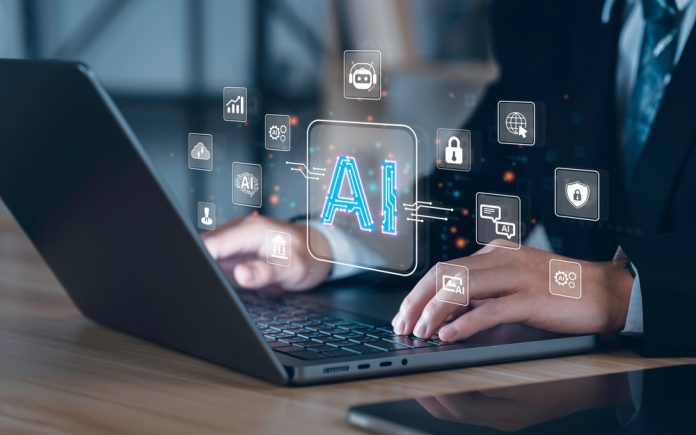
One of the defining principles of modern learning and development (L&D) is the belief that learning is an ongoing process, especially in today’s fast-paced, tech-driven workplace. To stay relevant, employees must engage in continuous improvement and upskilling, not as a one-time event but as a lifelong practice. The traditional idea that a degree marks the end of learning has become obsolete. Instead, the evolution of AI, adaptive technologies, and data-driven learning platforms has transformed how and when people learn–making learning more personalized, dynamic, and immediate than ever before.
As innovations in workplace learning accelerate, learning and development professionals must not only embrace new tools but also continuously refine their skills. Artificial intelligence is revolutionizing everything from content curation and skills mapping to real-time coaching and performance support. However, while AI can optimize delivery and customize pathways, it cannot replace the deep human elements that make learning truly stick: empathy, connection, and trust. The most effective learning experiences still depend on emotionally intelligent facilitators who can create a psychologically safe environment, foster reflection, and inspire growth.
The future of learning is a partnership between cutting-edge innovation and the human touch. As AI enhances how we deliver and track learning, L&D professionals must evolve as both technologists and humanists — skilled in leveraging tools while staying grounded in what makes training meaningful, including understanding who your audience is, what your audience brings, and neurodiversity in learning styles. Continuous upskilling and developing skillsets are no longer optional. That’s the essence of designing learning—it’s not just intelligent, but transformative.
One of the most transformative innovations in the L&D field over the past half century includes the advent of the internet, which has allowed distance learning to flourish. With that, new technologies and applications have sprung up to foster and further this change. To remain current, up-to-date, and marketable in the face of this change, a learning and development professional had to learn these new technologies. Learning programs like Adobe Captivate or Articulate Storyline were required to continue in the field.
The authors of this piece have, collectively, many years of experience in training and talent development. To stay relevant in the field, we have had to continually hone our skills by adapting to new technologies and continually learning. Much like the educational programs we have worked on to upskill employees, we too must continue to learn.
We’ve transitioned from using typewriters to computers and then to the internet. Writing educational storyboards and designing projects. which began by using Microsoft Word, and then transitioned to web-based applications like Monday.com and SessionLab.
We are now at the precipice of a learning revolution driven by perhaps the most game-changing technology of our era: Artificial Intelligence. More than any tool that has come before, AI has the potential to radically transform the role of the learning and development professional—not by replacing the human element, but by elevating it. The future of education will belong to those who can skillfully blend innovation with empathy, algorithms with insight, and data with human connection. It will demand not just technical literacy, but emotional intelligence—the ability to understand what learners need, what motivates them, and how to design experiences that not only inform, but inspire. This isn’t about choosing between tech and touch; it’s about fusing the two to meet the evolving expectations of modern learners.. As we navigate this new frontier, our greatest strength will not be in mastering machines, but in using them to amplify what makes learning truly powerful—purpose, curiosity, and the profoundly human desire to grow.
Staying Human in an AI-Driven Learning World – Tips and Tools
Embrace Continuous Upskilling—It Applies to You, Too
Tip: Just like your learners, you need a personalized learning journey. Treat your professional development as ongoing, not optional.
Tool Suggestion:
- LinkedIn Learning– for micro-courses on tech, leadership, and instructional design.
- Coursera– for structured certificates in learning tech and AI.
Use AI as a Creative Partner, Not a Shortcut
Tip: Encourage thoughtful use of AI–by you and your learners. AI can support brainstorming, outline generation, quiz writing, or learning path customization, but it shouldn’t replace critical thinking or human reflection.
Tool Suggestion:
- ChatGPT or Claude.ai – for content ideation, not content duplication.
- Otter.ai or Fireflies.ai – for transcribing, summarizing, and note-taking in meetings and training sessions.
Depending on your company’s information technology infrastructure, you may also have enterprise versions available to you. For example, if you are using Microsoft Office 365, you can add Microsoft’s AI, M365 Copilot, to enhance your results by accessing your files and records.
Evolve Your Toolset with Purpose
Tip: Stay current with modern authoring tools and project platforms to boost collaboration and scalability in learning design.
Tool Suggestion:
- Articulate Storyline or Rise 360 – for interactive e-learning design.
- Monday.com or Miro – for project planning, agile workflows, and team brainstorming.
- SessionLab – for collaborative session planning and visual storyboard authoring.
Balance Tech with Human-Centered Design
Tip: Technology is a tool, not the outcome. The best learning still connects to emotion, context, and relevance. Keep asking: “How does this experience help learners feel seen, challenged, and supported?”
Tool Suggestion:
- Empathy Maps – Use them to keep learner personas at the forefront.
- Liberating Structures – Facilitation frameworks to foster inclusive participation.
Navigating AI may be frightening, but with any new technology, there is an opportunity for skill growth and improvement. Utilize AI to enhance your experience and expertise. Just as we promote a culture of lifelong learning in organizations, we must practice what we preach and ensure that we always “sharpen the saw” by utilizing the tools available to L&D professionals to become better practitioners.



